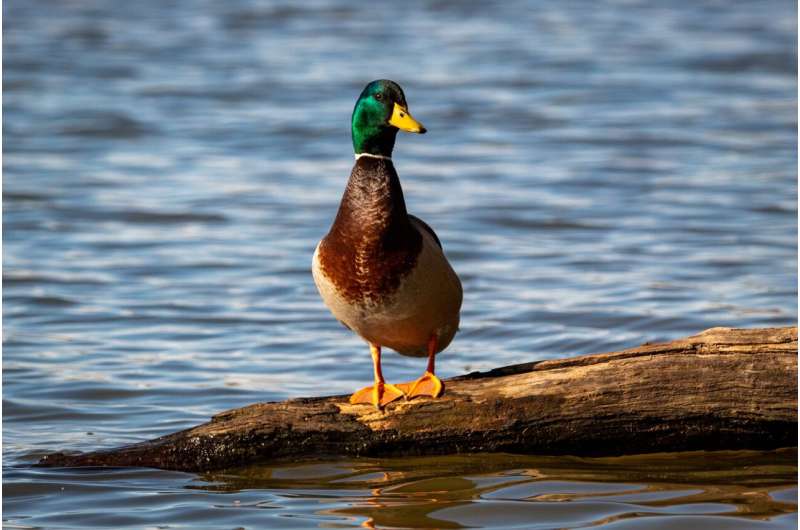This article has been reviewed according to Science X's editorial process and policies. Editors have highlighted the following attributes while ensuring the content's credibility:
fact-checked
reputable news agency
proofread
Survey shows decline in North Dakota breeding duck numbers

The North Dakota Game and Fish Department's 77th annual spring breeding duck survey conducted in May showed an index of about 2.9 million birds, down from 3.4 million last year.
The 2024 breeding duck index was the 30th highest on record and stands at 17% above the long-term (1948–2023) average, according to Mike Szymanski, migratory game bird supervisor for Game and Fish in Bismarck.
"By and large, all species were flat to down. Mallards, for instance, were down about 19%, pintails were down about 29% and blue-winged teal down roughly 13%," he said. "These species being down from last year is one thing, but when you compare it back to what we consider to be one of our best periods for breeding ducks in North Dakota (1994–2016), we're down a lot more than that. So, overall, mallards, pintails, blue-winged teal, gadwall, wigeon and northern shovelers are down anywhere from 24% to 49% from that 1994 to 2016 time period."
Szymanski said the decline in breeding duck numbers has a lot to do with the loss of land enrolled in the federal Conservation Reserve Program and perennial grasses on the landscape used for nesting cover by ducks.
"While our overall duck population count this year was about 2.9 million birds, that hardly compares to 5.4 million in 2002, our record-high," he said. "So, we're down considerably and were getting into this realm of a lower average where we probably won't be above 3 million breeding ducks very often based on our landscape conditions."
As always, spring was interesting, as Szymanski and crew run more than 1,800 miles of transects counting wetlands and waterfowl down to the species and social grouping on both sides of the road. This spring, the wetland count was the 32nd highest out of 77 years.
"Coming out of winter, we were certainly quite dry after having a mostly open winter across the state, but it rained a fair bit in the 30 days leading up to our survey, so that kept it from being really dry," Szymanski said. "At the time of our survey, wetland conditions were considered 'fair." We had a lot of new water on the landscape during the survey that really wasn't there when ducks were moving through."
On the bright side, Szymanski said, rains in later May and into June will be a boon for renesting opportunities and nesting probability in general for ducks.
"There should be a pretty good nesting effort by ducks this year in what upland nesting habitat is available," he said. "Wetlands are in much better shape now, and there should be a really good renesting effort for those birds that had nests destroyed by predators."
Szymanski cautions waterfowl hunters about reading too much into survey numbers just yet. He said that while the mid-continent duck populations aren't what they once were, more will be known once the U.S. Fish and Wildlife Service releases its survey results sometime in late August.
"It can be really hard to predict what our fall hunting is going to be like from what we see in the May survey," he said.
"But throughout summer, we'll have our July duck brood survey, and we'll have a fall wetland survey in September to kind of give last looks at what production was like in the state, and then also what wetland conditions are like leading into the hunting season. It's always important to check back and see what our surveys are showing us that we do throughout the year."
2024 the Duluth News Tribune (Duluth, Minn.). Distributed by Tribune Content Agency, LLC.




















